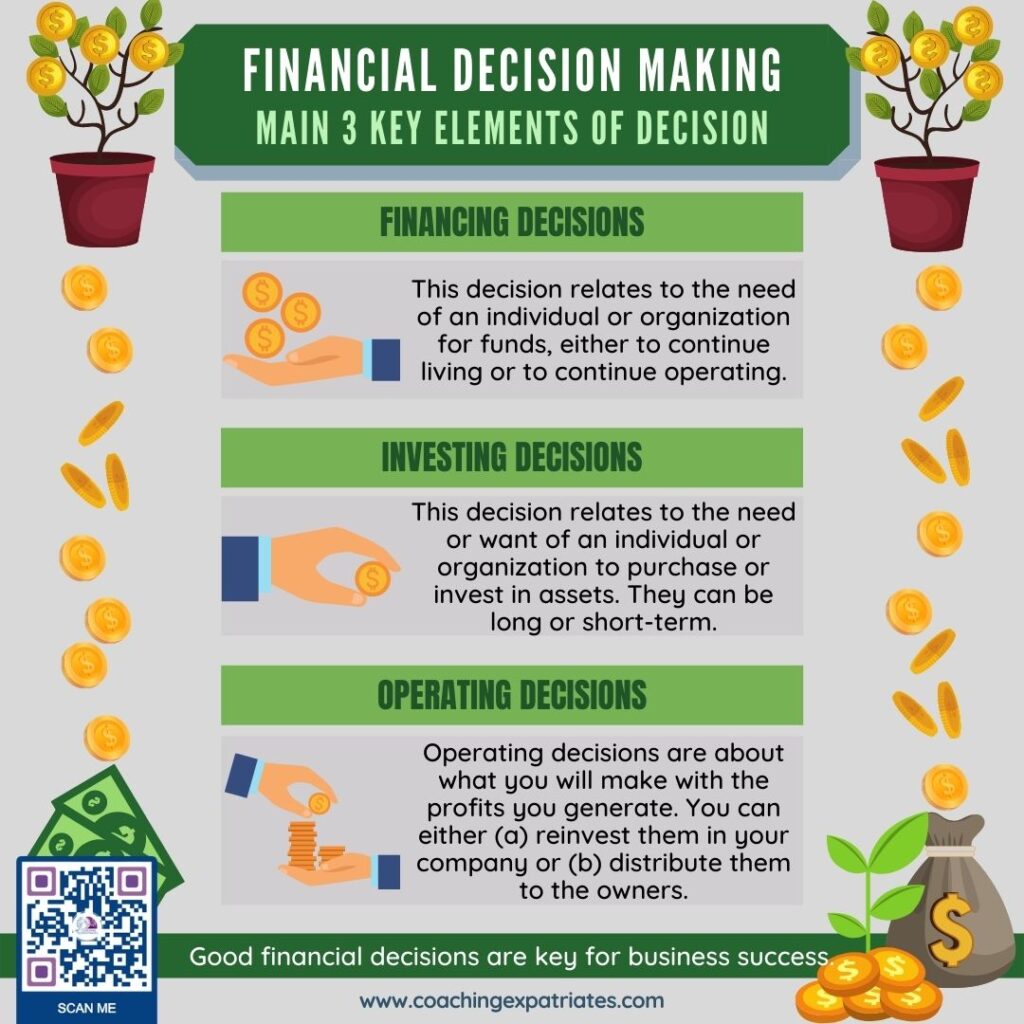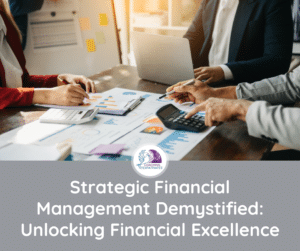Every corporation in the world has to make important financial decisions on a regular basis. Understanding financial decision-making is crucial for every leader and executive in any type of business and country, and it helps them use better their resources and money.
It is a myth to think that these decisions are made only by organizations’ heads of finance. Organizations with financially literate leaders have proven to be more effective and long-lasting.
Because corporations understand this, when actively recruiting, they also seek leaders and global talents who possess this trait.
Not only that, it’s been wildly reported by financial educators that the younger talents are when they become financially literate, the better decisions they make in their personal life and for their businesses.

So in this article, let’s learn more about this topic so that you can develop your financial literacy a little further and improve your employment opportunities. You might also enjoy our blog post dedicated to outlining How To Make Better Decisions.
The 3 Core Elements Of Financial Decision-Making
There are 3 main types of financial decisions when it comes to corporations and organizations in general. These types involve the decision of how to acquire or use the money a company has or wants to have.
- Financing decisions
- Investing decisions
- Operating decisions
Most frequently, companies have to make decisions in all these 3 areas. In other words, one does not exclude the need for another.
It is no coincidence that these 3 types are also reported in the Cash Flow Statement, a statement that investors require, public relations, and many other company stakeholders.
People want to understand exactly how money is being acquired and how it is being spent.
I - Financing Decisions
This decision relates to the need of the individual or organization for funds. Either to continue living (in the case of an individual) or to continue operating (in the case of an organization).
You can get funds from 2 sources. Either you get it from your own pocket – which in financial terms means you are getting the owner’s capital, or you are getting it from third parties – which in financial terms means you are getting it from banks or suppliers.
Funds from the owner’s capital are called Equity. In contrast, funds from third parties are called Debt.
The financial decision is the act of deciding whether you are going to get your funds from Debts or from Equity.
This decision is usually made during business or life events that require new funds. For example, in a company’s case, they could be launching a new product line for which they will require funds. In the case of an individual, they might want to enroll in an MBA, which they will require extra funds for.

As you can see, many of these events are (or can be) planned events. And the more you plan, the easier making this type of decision will be. Planning ahead helps you define your needs and create solid decision criteria for better results.
We live in times of uncertainty, though, so it will not always be possible to plan things beforehand.
It is very likely that your decision-making between these 2 options – Debt or Equity – will be very limited in these cases. And that is because getting money from Equity takes a longer time than getting money from Debt.
So, if you are in haste to get funds, very likely you will get it from Debt.
Or, in other words, it’s so much easier to get money from banks than to raise your own capital in a limited timeframe. The downside to getting it from banks, though, is that you’ll pay outrageous amounts of interest in return, which might hurt you or your operation over time.
Here are a few things to consider when making this type of decision:
- risk of the venture where you are applying these funds
- cost and interest of the funds
- cash flow consistency and how easy will you pay these funds off
- market condition and trends for your company
- if you want more owners
- how much Debt do you already have
- how the decision will affect your stock prices
So what’s the lesson here? Again, the more you plan ahead, the better and easier your financial decision-making will be. As you can see, to answer all these considerations, you do have to have some level of planning and strategizing.
II - Investing Decisions
This decision relates to the need or want of an individual or organization to purchase or invest in assets.
You can either buy property, more cars, jewelry, etc, or you can invest in improving assets, like revamping your kitchen (if you are an individual making the decision) or your organization’s warehouse (if you are a company).
When deciding about where to invest, you have mainly 2 options. Short-term or Long-term asset investments. This decision-making is done during the budgeting time in an organization and can be called either Capital Budgeting Decisions or CAPEX, which stands for capital expenditures.
There are 3 things that can affect capital expenditures:
a) Cash Flow: How much cash you make on a regular and consistent basis.
b) Profit: most financial illiterates think that cash and Profit are the same, but they are not. You can make cash without necessarily making a profit. Profit is a big factor in this decision-making too. If you are not making a profitable income, decision-making for new assets can become hairy.
c) Investment Criteria: it’s a smart way to define and rule out certain options or propositions. The criteria – or investment requirements – must be established way before even thinking about any new investment.
So what’s the lesson here? If “Cash is King” then Profit is its kingdom. When making investment decisions, we have to consider the criteria to make the best decision and assess how well you earn cash and how solid your Profit is. And how this investment will help the “King and Kingdom” in the long run.
III - Operating (or Dividend) Decisions
Dividend decisions are about what you will make with the profits you generate. You can either (a) reinvest the profits in your company or (b) distribute your profits back to the owners.
Or you can do something in-between, in other words, take a portion of profits to distribute and a part to reinvest, which is usually the most common decision. However, the big decision is how much you should reinvest and how much to distribute.
That’s why companies rely on their finance experts. These experts have to empower the decision-makers with the best information and data to make the optimal decision.
Here are some factors to take into consideration when you are part of these decision-makers:
- How are earnings this year
- What is the minimum amount needed to continue to operate, which will be required to set aside from these earnings.
- The Trend in dividends per share
- Investment opportunities
- Stock market and shareholder’s expectations
- Taxes
- The cost of money in the market
- Legal and other foreseen risks
- Other cash flow expectations
So what’s the lesson here? To make operating (or dividend) decisions, decision-makers have to assess the company’s internal elements and external factors.
As you can see, it requires a lot of business acumen to make these decisions. Understanding the business, its market, and having financial literacy are key elements in financial decision-making.
You might or might not be the financial decision-maker for your company, but you surely will have to understand it, as you are undoubtedly part of its process. You will – at some point – provide information, data, or results to other people who will cascade it up until it reaches the final decision-makers.
So knowing what they need is fundamental to being a helpful and beneficial employee to your company, as financial decision-making is crucial for business continuity. It also helps faster decisions with minimum decision fatigue.

Other Factors That Affect Global Leaders In Financial Decision-Making:
During making decisions in each of these 3 areas, global leaders will have to collect information and other factors to help them make more educated decisions.
Here are a few of them for you to include in your checklist:
- Country’s exchange rate – stable or volatile?
- Country’s economy – upward or downward trend?
- Country’s investment rate or grade
- Investment opportunities in different countries
- Inflation rates in each of the countries where operations and suppliers are
- Cost of funds in different countries
- Cross-border funding rates
- Payment terms in each country where operations and suppliers are
Final Remarks
Now you understand a little more about the 3 financial types of decisions that global leaders and executives have to make regularly. You also understand that gaining financial literacy is important for you and your company.
It is crucial for you because it provides you with better employment opportunities, positioning your career better. For your company, it is also essential because this knowledge helps you make better decisions with more impactful and lasting results.
If you want to improve your financial literacy, check out our Global Executive Leadership Program. We go over all 4 success pillars of global leadership during 9 online modules, including one specific module dedicated to Finance For Non-Finance People.
In case you have specific projects or decisions in mind to problem-solve or a situation in which you feel stuck, you can purchase one of our executive coaching packages. We can help you sort the issue or topic out during your program and find the best course of action to make things better for you and your team. Executive coaching can be a powerful tool in decision-making and leadership.
Please consider subscribing to our newsletter using the form below if you enjoyed this post. We focus on providing good content to global leaders and executives who want to make impactful business decisions and be more inclusive and influential. We know your inbox is sacred, so we email just once per week, and we never sell your information. Trust is the basis of global leadership, and we fully honor it.







